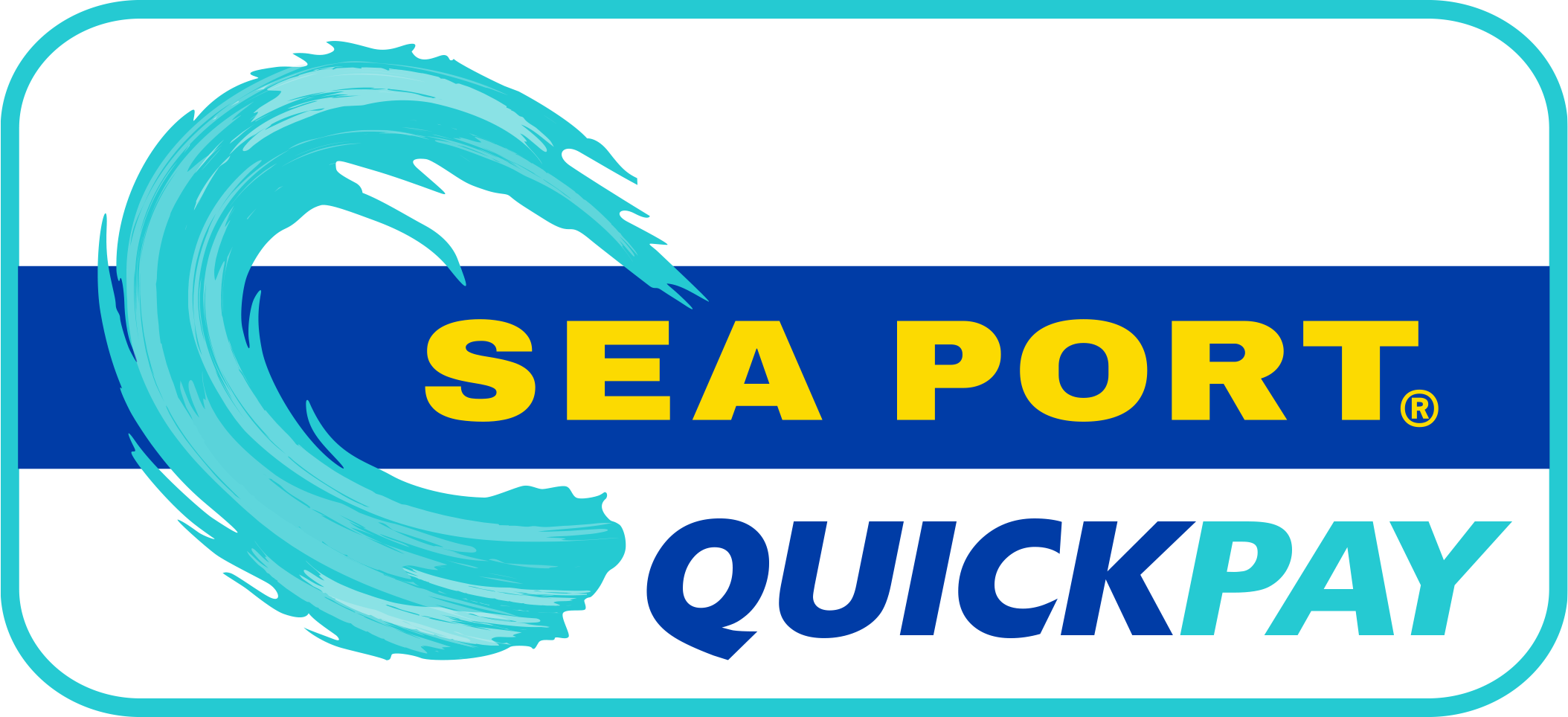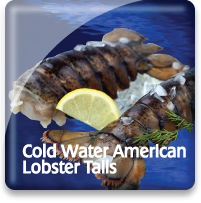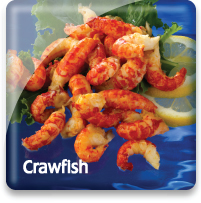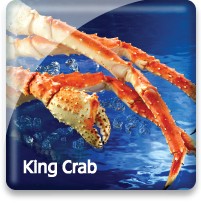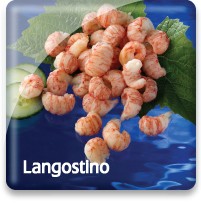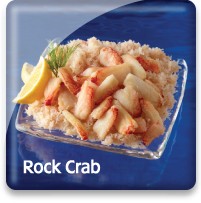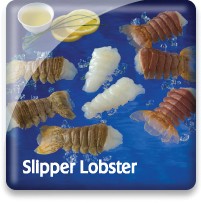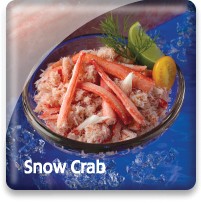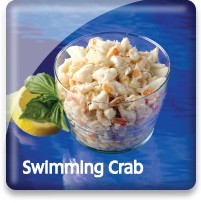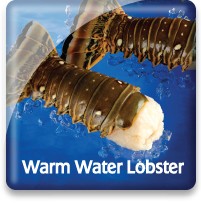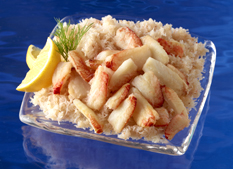
Rock Crab

Market Name: Eating QualitiesThey have a firm texture, sweet meat, and low fat or oil content. One of the most popular uses of crab meat is for making carb cakes.
The Atlantic rock crab is sometimes referred to as the “peekytoe” crab referring to the fact that the legs are "picked" (a Maine colloquialism meaning "curved inward"). Until the 1980s, rock crab was widely viewed as a nuisance and was almost exclusively used for lobster bait. A female rock crab can produce up to half a million eggs a year.
|
Description & CharacteristicsRock Crab are found primarily along the Canadian Atlantic coast but can range as far south as the east coast of Florida. The mild flavor and firm texture of Rock Crab meat make it a popular ingredient in many crab dishes.
Other Resources |
Handling Instructions for Rock Crab
Our frozen rock crab meat should be stored at or below 0°F (-18°C) and then thawed properly when ready to consume as a precooked product. The frozen shelf life of our rock crab meat is 24 months. Links to proper seafood handling instructions: NOAA - Fish Watch: Handling Seafood and A Consumer Guide to Safe Seafood Handling.
Thawing Rock Crab
To thaw frozen rock crab meat, place a 5# block in a sealed container or plastic bag in the refrigerator (33 to 39°F) for 24-48 hours or until the block is entirely thawed. This method results in a high quality thawed crab meat that retains its natural juices and delicate texture. Crab that is not consumed promptly after thawing needs to be refrigerated between 33 and 39°F and consumed within 2-3 days.
Important Instructions for Rock Crab
Consuming rock crab meat immediately after proper thawing yields the best quality.
The Federal Food, Drug and Cosmetic Act now requires that all foods that are not raw agricultural commodities and that contain a major food allergen be labeled to clearly identify the name of the food source form which the allergen is derived. (21 CFR U.S.C. 343(w)(1)). The act defines eight foods, and any ingredients derived from these foods as major food allergens: Fish, Crustacean Shellfish, Milk, Eggs, Tree Nuts, Peanuts, Wheat & Soybeans. The name of the food source that must be listed on the label for fish or crustacean shellfish must be the specific type of fish or crustacean shellfish. The market names of species of fish and crustacean shellfish should be used to identify the food source of these two major food allergens. If you intend to re-pack these seafood products, be sure the allergen is declared in either one of two ways:
1) Within the list of ingredients
or
2) In a separate “Contains” statement immediately after or adjacent to the list of ingredients.
Consult the Fish and Fishery Products Hazards and Controls Guidance, Fourth Edition, Chapter 19 for more detailed information on the labeling of food allergens.
Cooking Tips
Rock crab meat is precooked and can be consumed chilled or in heated preparations. Links to cooking tips and recipes.
Canada
Canada is almost a carbon copy of the United Sates in terms of land mass and miles of coastline. This makes Canada very similar to the United Sates in terms of fishery resources with the exceptions of the U.S. warm water fisheries along the Gulf coasts and Hawaii.
Canada’s wild fishing industry operates on the Atlantic and Pacific coasts, and on more than 800 freshwater lakes in between. The country exploits more than 100 commercially valuable species of fish. The top wild species caught are hake, ocean perch, cod, herring, salmon, capelin, cold water shrimp, snow crab, rock crab, lobster, halibut, and scallops.
Canada’s aquaculture production is growing and is primarily comprised of salmon, steelhead, mussels, oysters, scallops, trout, Arctic char, with additional progress being made with black cod, halibut, haddock, eel, tilapia, sea urchin, quahog clams, and geoduck clams.
Canada has strong nationwide fishery and aquaculture management in place to help advance their sustainable development.
China
With more than 1.3 billion people, China is today the world’s most populous country. With a growing economy fueling an appetite for seafood, China has begun importing seafood for in-country consumption, as well as exporting a great deal of its production. In fact, since 2002, China has continued to export more fish and fishery products than any other country in the world, with Japan, the United States, and the Republic of Korea as its main export markets.
Chinese distant water fishing activities started in 1985 when China gained access to new fishing grounds through agreements with foreign countries. China operates vessels in West Africa, the North Pacific, and tuna longline vessels in the South Pacific. In addition, squid are harvested in the Japan Sea and the North Pacific under Chinese-flagged vessels.
Carp are also commercially important, as are bream, shad, eel, cat fish, rainbow trout, salmon, whitebait, mullet, mandarin fish, perch, sturgeon, murrel and pangolin. Commercial shellfish include freshwater shrimp and river crabs, molluscs such as mussels, clams and freshwater snails.
With one-fifth of the world’s population, and an official government policy to promote aquaculture, China has today become an aquaculture powerhouse, now producing more than two-thirds of the world’s aquaculture species. Fish and shellfish are grown in freshwater as well as the marine environment, including rivers, estuaries, inland lakes, ponds, and the sea.
Go Blue! Seafood Sustainability Spectrum*Click here for an explanation of our Sustainability Spectrum 
Sustainability AssessmentThe Atlantic Rock Crab is a relatively common species ranging from Newfoundland and Labrador in the north to the east coast of Florida in the south. Sea Port sources Rock Crab caught along the near shore regions of Atlantic Canada. Sea Port also sources from China where bulk cooked Canadian Rock Crab is shipped for more economical processing. In Canada, Rock Crab is commonly found in shallow, in-shore waters ranging from 15 to 100 feet. Canada has developed Rock Crab fisheries cautiously because juvenile Rock Crabs are a key prey item for lobster, an important Canadian fishery. There have been some signs of overfishing in several Quebec management sub-areas, but given the lack of information about the individual stocks and how quickly the crabs grow and reproduce, cautious quotas continue to be recommended. The Quebec region does gather information via trawl and trap surveys and monitors Rock Crab demography in closed areas, but more data on life history is needed to ensure that the stocks remain healthy. The southern Gulf of St. Lawrence region has no fishery-independent data on stock health. Neither region tracks Rock Crab harvested by and for use in the lobster fishery, which could have a significant impact on populations.
Environmental Impact: Low to ModerateQuotas in the Canadian Rock Crab fishery are set cautiously and the gear type used to catch Rock Crabs (traps) has minimal impacts on bottom habitat. However, more research is needed to understand the life history and demography of Rock Crab. Rock Crab is a common bait item for the Canadian lobster fishery, but Rock Crabs harvested for bait by lobster fishermen are not tracked or recorded, which could have a significant impact on the population.
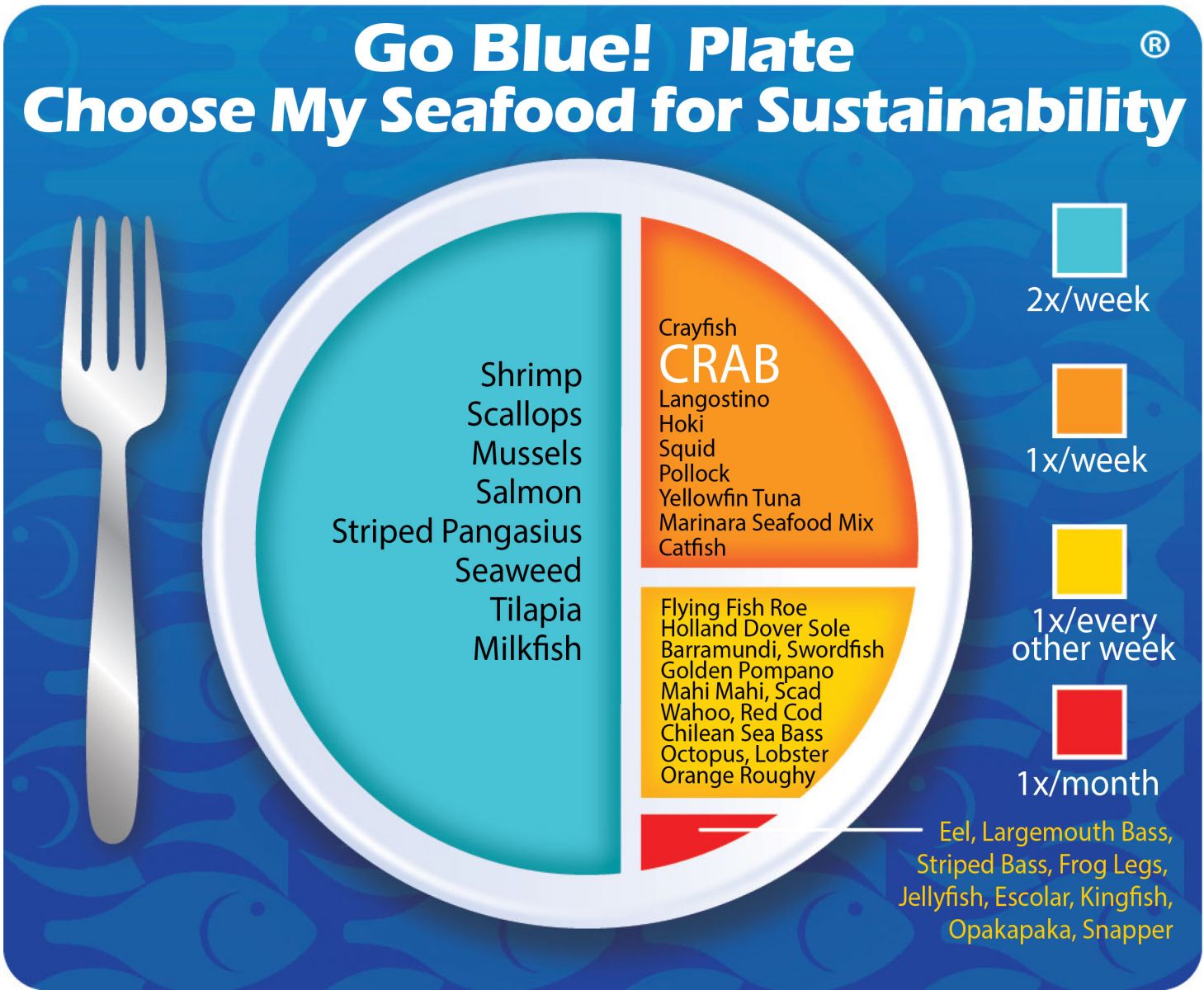
Sustainability Improvements NeededReporting of Rock Crab catches by the Canadian lobster fleet should be required. More research on the demographics and life history of Rock Crabs is needed to better assess population health and set responsible quotas and other management regulations (for example: gear restrictions, seasonal or area restrictions).
Actions that Sea Port is UndertakingSea Port believes that this fishery is well managed by the Canadian Department of Fisheries and Oceans and is well poised to advance in a cautious manner to assure against overfishing and subsequent negative impacts to the Canadian lobster fisheries. Sea Port also believes that, in aggregate, choosing from a diverse variety of seafood is better for sustaining the world’s seafood resources and that Rock Crab at this time can certainly be a part of this variety. We created the sustainability assessments for each of our seafood items in order to reveal the existing and potential environmental impacts and risks that are associated with producing them for human consumption. This allowed us to establish the starting position for each of our seafood items along our progressive Go Blue! Seafood Sustainability Spectrum®. These assessments are only a single snapshot in time and because of this, we will continue to assess and update the critical sustainability needs associated with our supply sources and issue updates to the Go Blue! Seafood Sustainability Spectrum® as needed. There is a growing global awareness for the need to assure the sustainability of farmed and wild caught seafood and because of this; all around the world positive changes are rapidly occurring at all levels of the seafood supply chain. We will continue to spread this growing awareness and work with our many industry partners to improve the sustainability of all seafood, which we believe is the ideal protein of choice to feed an ever growing world population. Our Go Blue! Seafood Sustainability Spectrum® serves as our compass and yardstick as we strive to move all our products forward to becoming more sustainable. Please join us in this committed quest and Catch Our Wave® to sustainability by choosing a diverse variety of responsibly produced seafood as part of your diet.
|

